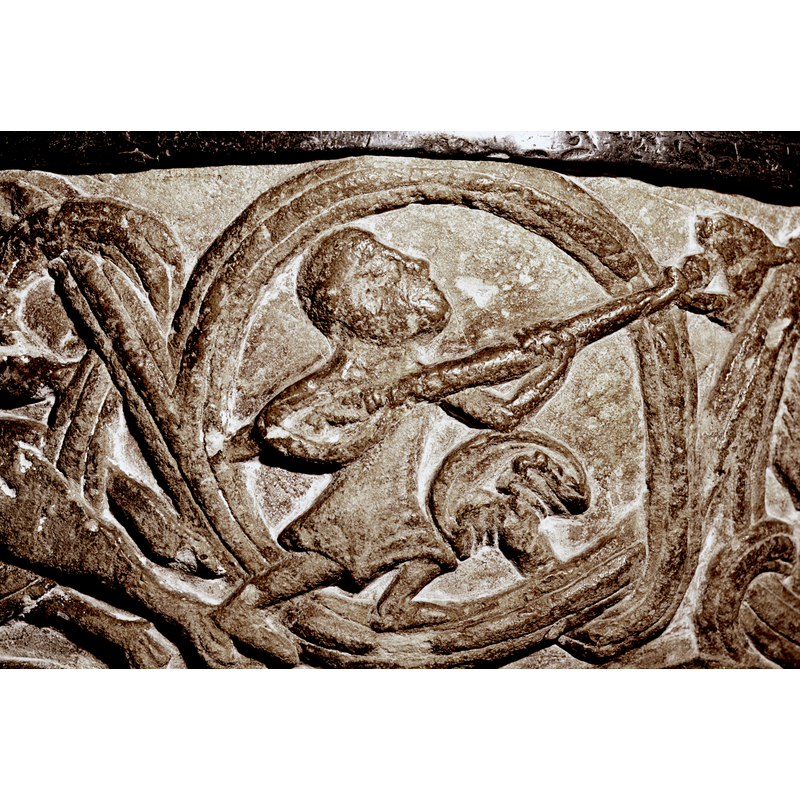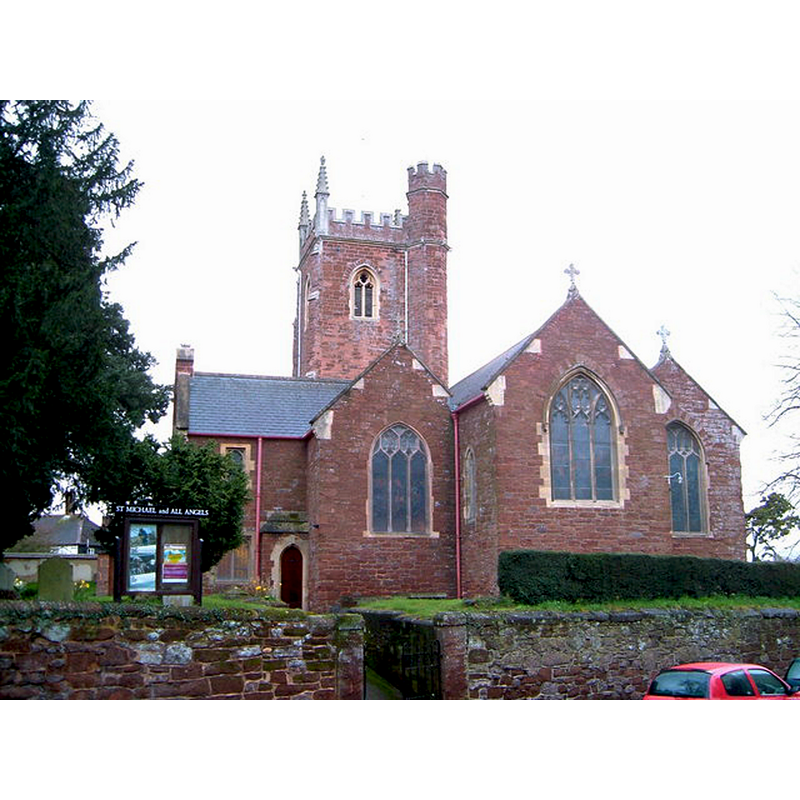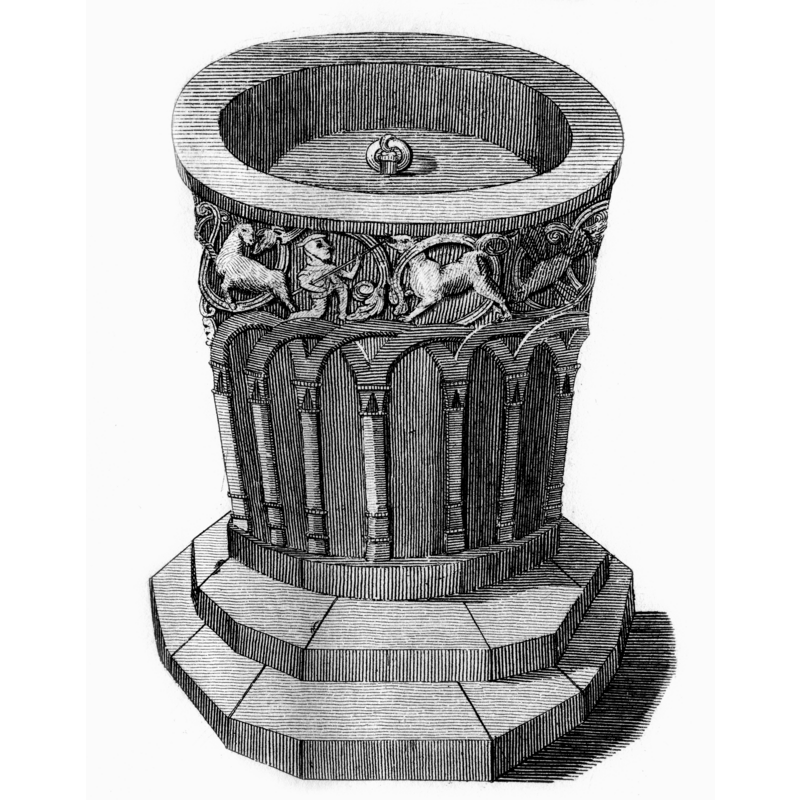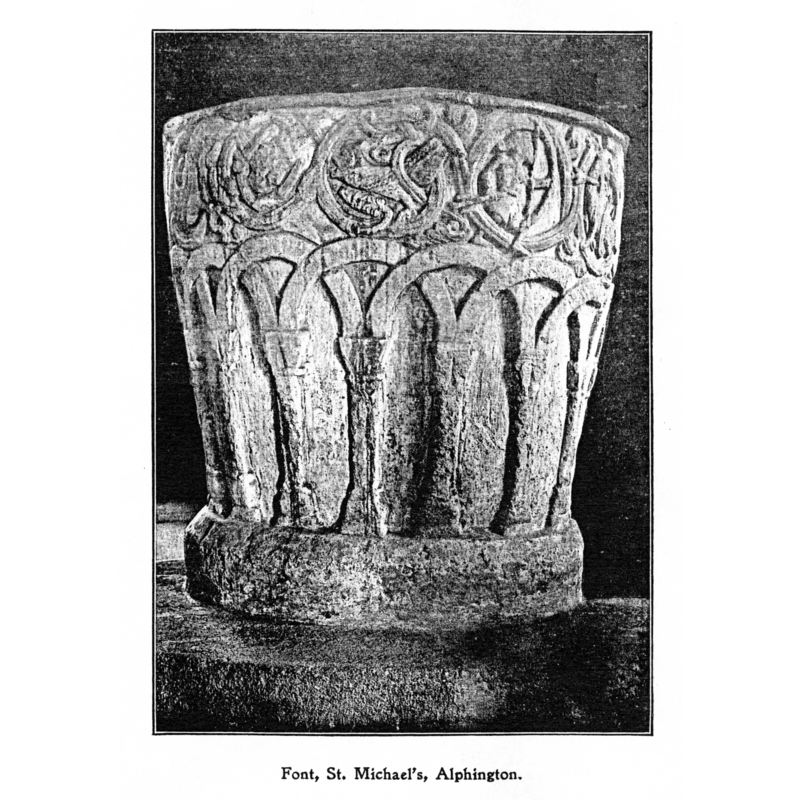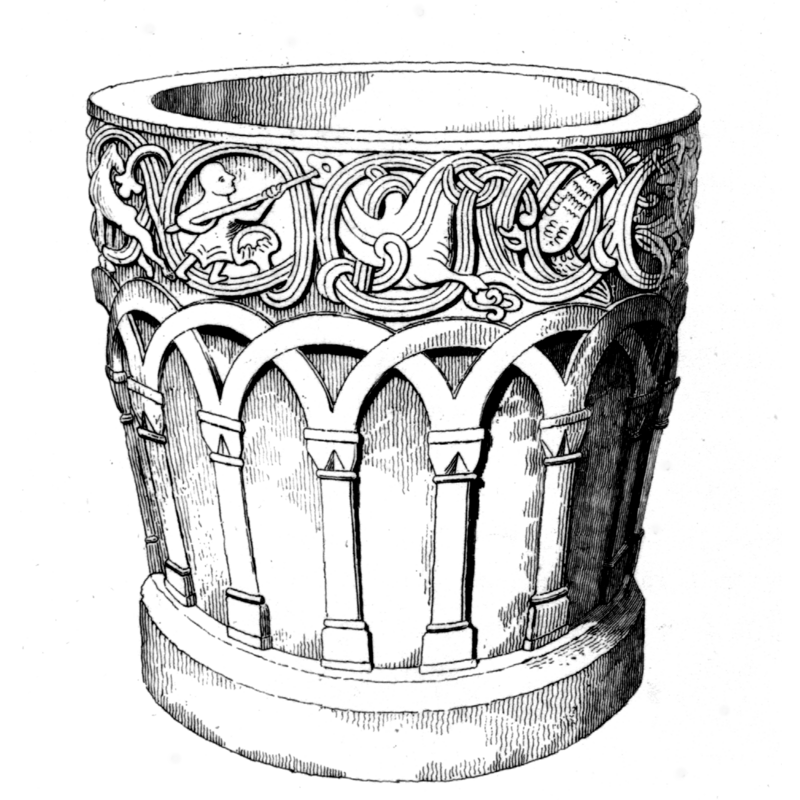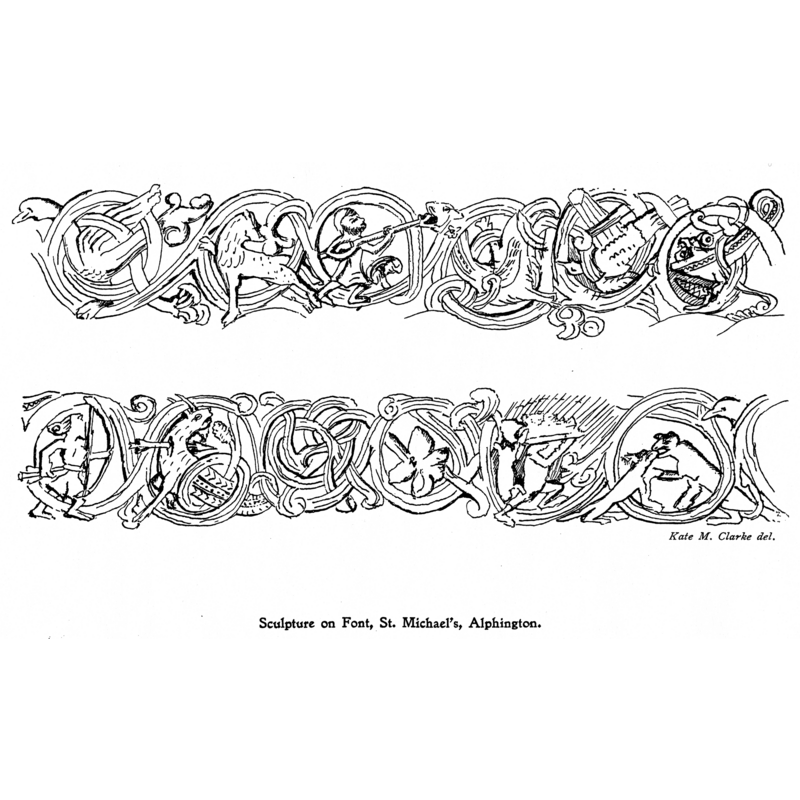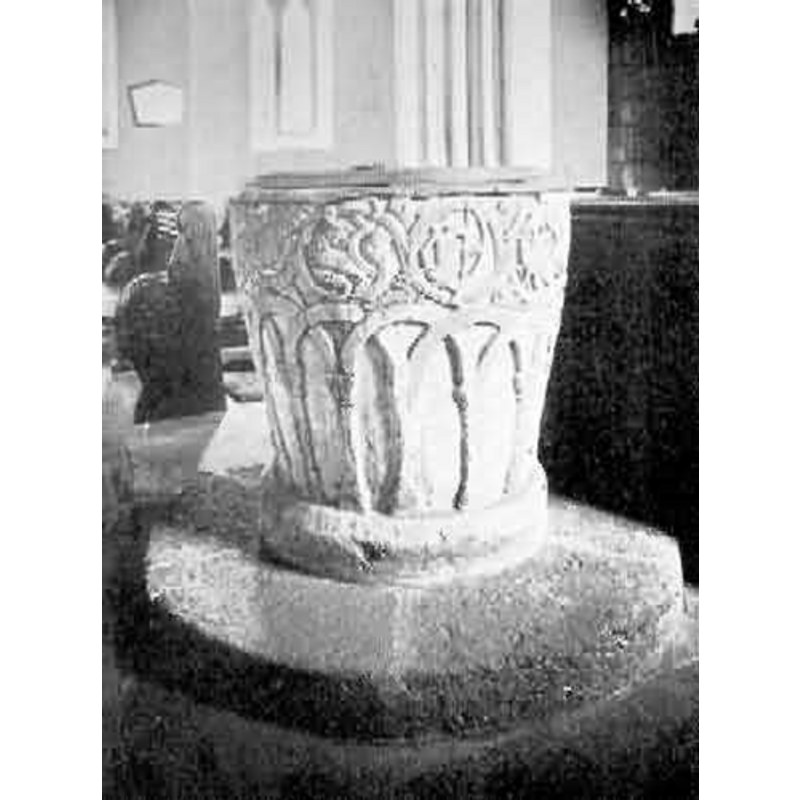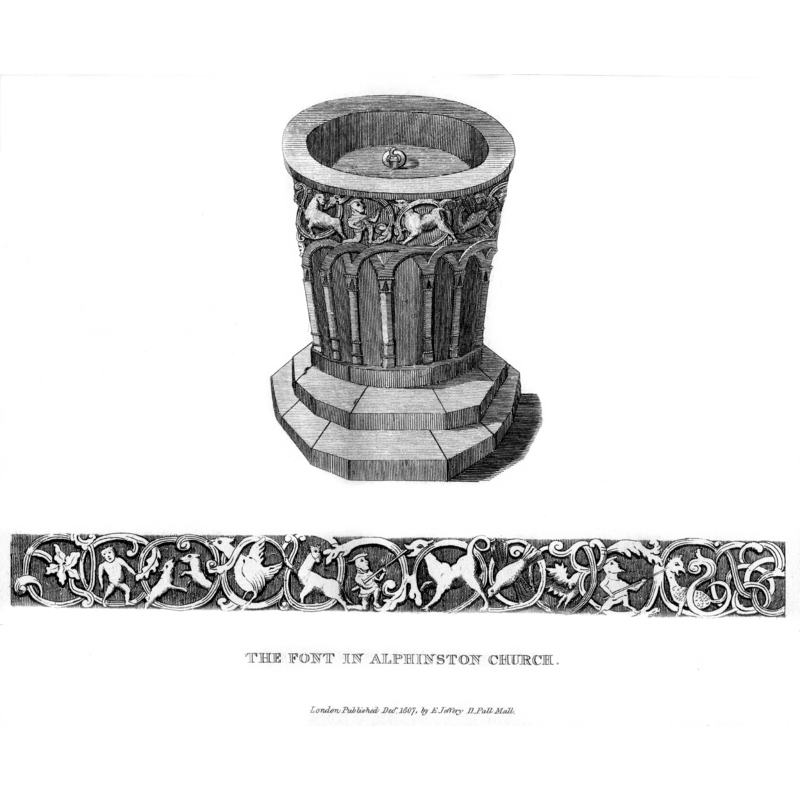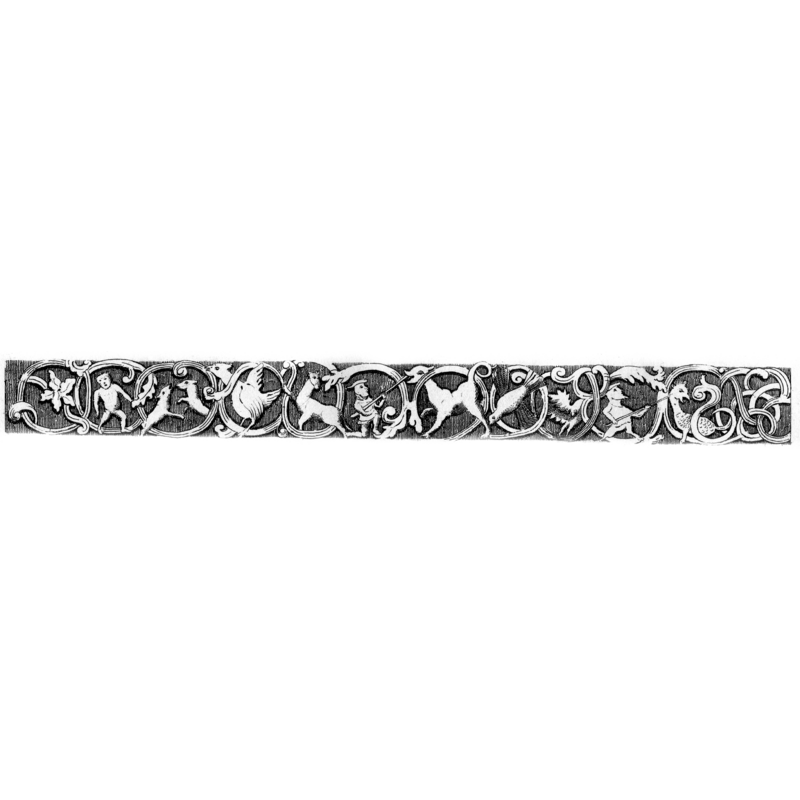Alphington No. 1 / Alfintone
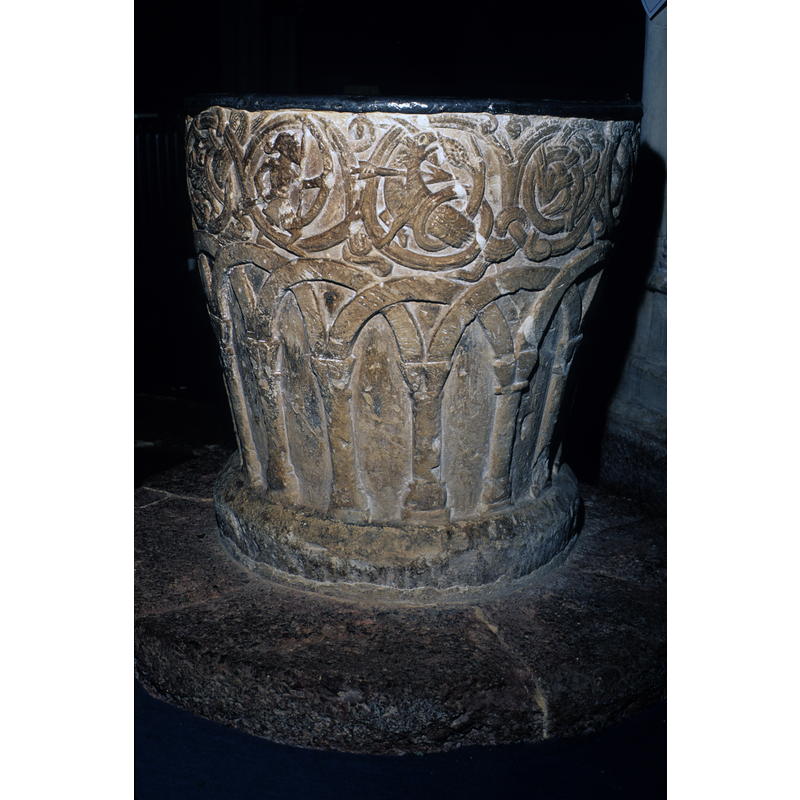
Image copyright © Baptisteria Sacra Index, 2023
Results: 19 records
animal - mammal - quadruped
design element - architectural - arcade - blind - round arches - intersecting arches
design element - motifs - foliage
design element - motifs - interlace
human figure? - hunter - with axe - carrying the kill
Scene Description: a hunter returning from a hunt with an axe on his soulder; the kill hangs from the ax; an animal (?) walks in fron of him [NB: the depiction of the figures does not appear to represent images of humans and known animals, but rather of fabulous creatures or monsters] -
Copyright Statement: Image copyright © Baptisteria Sacra Index, 2023
Image Source: digital image of a photograph taken 29 July 1998 by BSI
hunting scene - archer - slayed animal - fabulous animal or monster?
hunting scene? - hunter armed with spear? - slaying dragon? (angel? - archangel? - St. Michael and dragon?)
Scene Description: Upper edge of bowl has an ornamental band with three scenes -- the first scene has been claimed as a representation of St. Michael slaying the dragon, but, like the others, it could represent a mythical hunting scene; this is the most human-looking figure on the bowl side but the victim is a fabulous animal, perhaps a dragon
Copyright Statement: Image copyright © Baptisteria Sacra Index, 2023
Image Source: digital image of a photograph taken 29 July 1998 by BSI
view of basin - detail
view of church exterior - east view
Scene Description: Source caption: "St Michael's Church, Alphington. Red sandstone church, from the east. "Quite an ambitious building", say Cherry and Pevsner."
Copyright Statement: Image copyright © Derek Harper, 2006
Image Source: digital photograph taken 31 March 2006 by Derek Harper [www.geograph.org.uk/photo/144884] [accessed 26 June 2016]
Copyright Instructions: CC-BY-SA-2.0
view of font
Scene Description: Illustration in Paley (1844) [note that Paley has changed the appearance of some of the creatures: the hunter with the spear, for example, looks very different from the bearded fellow on the actual font.
Copyright Statement: Image copyright © [in the public domain]
Image Source: digital image of an engraving in Paley (1844: unpaged)
Copyright Instructions: PD
view of font
view of font
view of font
view of font - iconographic program
view of font - north side
view of font and cover
view of font and cover
view of font and iconographic program
INFORMATION
FontID: 00284ALP
Object Type: Baptismal Font1
Church/Chapel: Parish Church of St. Michael and All Angels
Church Patron Saints: St. Michael & All Angels
Church Location: Chudleigh Road, Exeter, Devon, EX2 8TS, United Kingdom
Country Name: England
Location: Devon, South West
Directions to Site: Located off (E) the A30, 3 km S of Exeter
Ecclesiastic Region: Diocese of Exeter
Historical Region: Hundred of Wonford [in Domesday]
Font Location in Church: Inside the church, in the N side of the nave, W end. This church uses the N door for access
Date: ca. 1120-1140?
Century and Period: 12th century, Norman
Cognate Fonts: Decoration similar to the font at Porchester (Hants.) Also, the new (19th cent.) font at Temple Church, London [cf. Index entry for London No. 45], a replica of Alphington's own (cf. Paley, 1844). Replica also at Porchester. The 19th-century font at Bockleton is said to have been designed based on this font
Credit and Acknowledgements: We are grateful to Dr. Roger Peters, of www.wissensdrang.com, for his permission to use the transcription of and images from Stabb (1908)] [cf. Index entry for Alphington No. 2 for an early holy-water stoup also in this temple]. We are also grateful to the Thomas Fisher Rare Books Library for access to the copy of Lysons’ Magna Britannia, and to Jim Ingram, of the Preservation Services, Robarts Library, for the digital imaging of Lysons’ illustrations]
Church Notes: The church is 15th century and there are no other Norman remains in it.
Font Notes:
Click to view
There is an entry for Alphington [variant spelling] in the Domesday survey [http://opendomesday.org/place/SX9189/alphington/] [accessed 26 June 2016] but it mentions neither cleric nor church in it. Gough (1792) writes of a font "charged with interlaced arches and a fascia of birds, beasts, and hunters, in grotesque". Polwhele (1793-1806) suggests that the ornamentation on this font shares in pagan as well as Christian character. The Antiquarian Repertory (1807-1809) shows an engraving of the font and notes: "The font at Alphington Church in Devonshire, is generally allowed to be of great antiquity. Hunting monsters and other grotesque ornaments occurring more frequently in ancient sculpture, even on buildings appropriated to religious uses, than subjects from sacred history, or the symbols of christianity [...] As to the particular age of this font, or by whom it was made or given, there is neither record nor tradtion, nor is there sufficient data, whereon to form a probable conjecture." Noted and illustrated in Lysons (1806-1833) as a baptismal font "surrounded with pillars and interlaced arches in low relief, with an ornament of grotesque figures over them." Oliver (1840-1842) writes: "The Baptismal Font is of remote antiquity, and may have been here before the Conquest", and mentions Polwhele's conjecture [cf. supra] about the ornamentation themes. Oliver (ibid.) adds" "With deference I submit, that the scroll work is neither more nor less than a rude representation of the combat of St. Michael (to whom the Church is dedicated) with the great Dragon, as related in the 12th chapter of the Revelations. The embellishment of the lower part consists of circular arches intersecting each other; the point of intersection producing what is vulgarly called Gothic architecture. This may possibly be the earliest specimen of the kind in our Parochial Churches." Illustrated in Paley (1844). In Lewis' Dictionary of 1848. Listed in Cox & Harvey (1907) as a Norman font. Studied in Clarke (1907) and (1913), who gives the following sequence of ornamentation in the seven rings which surround the basin sides: "1-2)St. Michael, slaying the Dragon; 3)a bird falling head downwards; 4)another dragon; 5-6)an archer whose arrow has pierced a composite animal with goat's head and lacertine tail; 7)interlacings; 8)a large flower; 9)a man carrying a hareon an axe (much damaged); 10)two animals -- otterand crocodile (?); 11)a large bird, probably a swan; 12)a quadruped -- pard or panther (?)". Clarke informs that "a copy of this font was made for Temple Church, London, when it was restored in 1841. It is not quite accurate; the bird No. 3 is flying instead of falling, and several details are faulty, but it is useful as it shows the subject of No. 9, which at Alphington is so badly damaged that it can hardly be decyphered." Described and illustrated in Stabb (1908): "the bowl is ornamented with a design of interlaced arches, surmounted by a band of carving. On the south-east side are two panels representing St. Michael's contest with the Dragon, rather an unusual subject for a font; possibly the fact of the church being dedicated to St. Michael was the reason for which it was chosen. The dragon is given plenty of tail, divided into two parts, spreading into the panels on either side. On the left of St. Michael is an animal which from its spots is probably meant for a panther. Following round the font to the left, the next panel represents an eagle. The eagle is often carved on fonts, and is symbolical of baptism. An old idea was that when the eagle got old, and its wings heavy and sight failing, it mounted high in the air and scorched its wings in the heat of the sun, after which it dipped itself three times in a fountain of clear water and became young again. Another panel represents a bird falling head downwards with the wings outstretched. Another panel has an archer shooting an animal most probably intended for a goat, as it has horns and a beard; another bears a large flower, possibly a rose; another the figure of a man carrying a stick. In Paley's Baptismal Fonts it is stated that one of the carvings on the Alphington font is of a man carrying a hare on an axe. The reference is probably to this panel, but it is not easy to discern the hare. The crocodile and hydra are also carved on the bowl. This subject will be found [in St. Mary's Church] at Melbury Bubb, Dorset." In Pevsner (1952) as Norman. In Stone (1955) dated ca. 1120-1140. On-site notes: the basin well is lined with lead and has a central drainage hole; the centre and lower part of the basin are covered with a blind arcade of intersecting round arches; the upper basin side has an ornate band all around comprised of interlace forming circles in which three men appear involved in a hunt of wild beasts or monsters; the beasts, men and foliage are all intertwined - a technique reminiscent of manuscript decoration: 1)hunter slaying a dragon [it has been suggested that it may represent St. Michael slaying the dragon]; 2)hunter with bow and arrow slaying fabulous animal; and 3)man returning from a hunt with axe and kill; 4)mythical beasts and ornametal leaves; the short round lower base is plain, as is the equally round plinth. The stone of the font was identified by Paley (1844) as "Beer oolite, a stone much used in Devonshire". [NB: the 19th-century font at Bockleton is said to have been designed based on this font [Henry Woodyer, 2002)]. Blatch (1995), in his entry for Temple Church, London, writes: "The 1842 font is a replica of the one at Alphington Church". [cf. Index entry for Alphington No. 2 for an early holy-water stoup also in this church].
COORDINATES
Church Latitude & Longitude Decimal: 50.698378, -3.53328
Church Latitude & Longitude DMS: 50° 41′ 54.16″ N, 3° 31′ 59.81″ W
UTM: 30U 462338 5616420
MEDIUM AND MEASUREMENTS
Material: stone, Beer stone (oolite stone)
Font Shape: cylindrical (mounted)
Basin Interior Shape: round
Basin Exterior Shape: round
Drainage Notes: lead lining
Rim Thickness: 9 cm*
Diameter (inside rim): 65 cm* / 63.75 cm**
Diameter (includes rim): 83 cm* / 82.5 cm**
Basin Depth: 25 cm* / 22.5 cm**
Height of Basin Side: 70 cm*
Height of Base: 14 cm* [plinth-like]
Font Height (less Plinth): 84 cm* 82.5 cm**
Font Height (with Plinth): 96 cm* [including a second round plinth supports bowl and low base]
Notes on Measurements: * BSI on-site / ** in inches in Clarke (1913: 329)
REFERENCES
Antiquarian repertory: a miscellaneous assemblage of topography, history, biography, customs, and manners, intended to illustrate and preserve sevral valuable remains of old times, London: Printed and published for E. Jeffery, 1807-1809
Henry Woodyer, Gentleman Architect, Reading: The University of Reading, 2002
Bond, Francis, Fonts and Font Covers, London: Waterstone, 1985 c1908
Clarke, Kate M., "The baptismal fonts of Devon -- Part I", 45, Report and Transactions of the Devonshire Association for the Advancement of Science, Literature and Art, 1913, pp. 314-329; p. 326-327, 329
Clarke, Kate M., "The symbolism of the ancient fonts of Stoke Canon, St Mary Church and Alphington", IV:V (1907), Devon and Cornwall Notes & Queries, 1907, pp. 129-139 and plates; p. 129-139
Cox, John Charles, English Church Furniture, New York: E.P. Dutton & Co., 1907
Crossley, Frederick Herbert, English Church Craftsmanship: an Introduction to the Work of the Mediaval Period and Some Account of Later Developments, London: B.T. Batsford, 1941
Drake, Colin Stuart, "Romanesque Fonts in Kent: the French Connections", CXXIII, 2003, Archaeologia Cantiana, 2003, pp. 333-352; p. 342 and pl. VII
Gough, Richard, "Description of the old font in the Church of East Meon, Hampshire, 1789: with some observations on fonts", X, Archaeologia, 1792, pp. 183-209; p. 188-189 and fn
Kroesen, Justin E.A., The Interior of the medieval village church = Het middeleeuwse Dorpskerkinterieur, Leuven: Uitgeverij Peeters, 2004
Lewis, Samuel, A Topographical Dictionary of England, Comprising the Several Counties, Cities, Boroughs, Corporate and Market Towns, Parishes, Chapelries, and Townships, and the Islands of Guernsy, Jersey, and Man, with Historical and Statistical Descriptions [...], London: S. Lewis, 1831
Lysons, Daniel, Magna Britannia, being a concise topographical account of the several counties of Great Britain, London: Printed for T. Cadell and W. Davies, 1806-1822
Oliver, George, Ecclesiastical Antiquities in Devon: being Observations on Several Churches in Devonshire, with some Memoranda for the History of Cornwall, Exeter: W.C. Featherstone, 1840-1842
Paley, Frederick Apthorp, Illustrations of Baptismal Fonts, London, UK: John van Voorst, 1844
Pevsner, Nikolaus, South Devon, Harmondsworth: Penguin Books, 1952
Polwhele, Richard, The History of Devonshire [...], London: Printed in Trewman and Son, for Cadell and Davies, 1793-1806
Stabb, John, Some old Devon churches, their roods, pulpits, fonts, etc., London: Simkin, [et al.], 1908-1916
Stone, Lawrence, Sculpture in Britain: the Middle Ages, Harmondsworth: Penguin Books, 1955
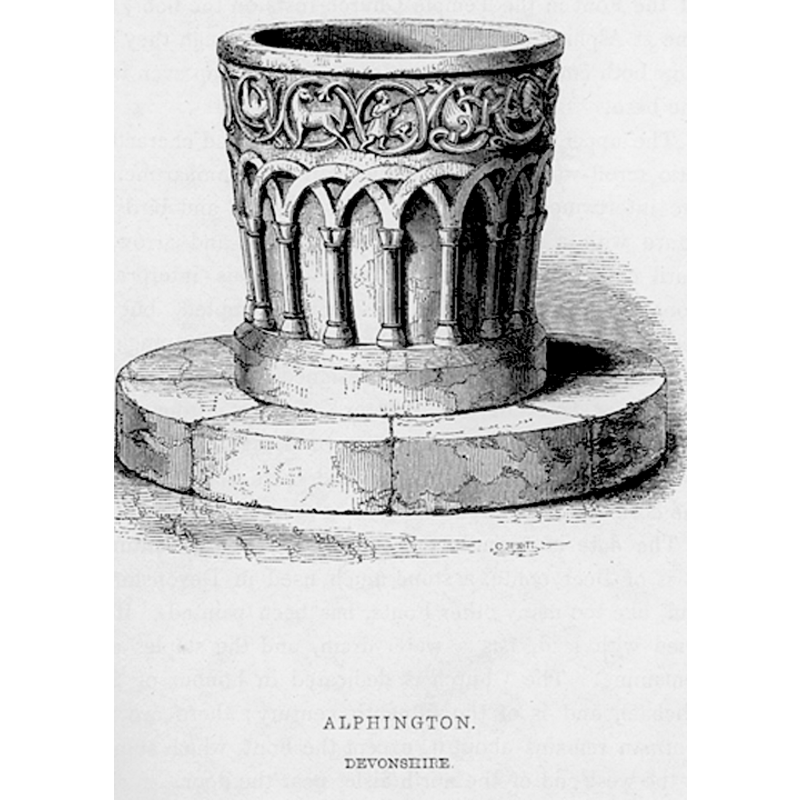
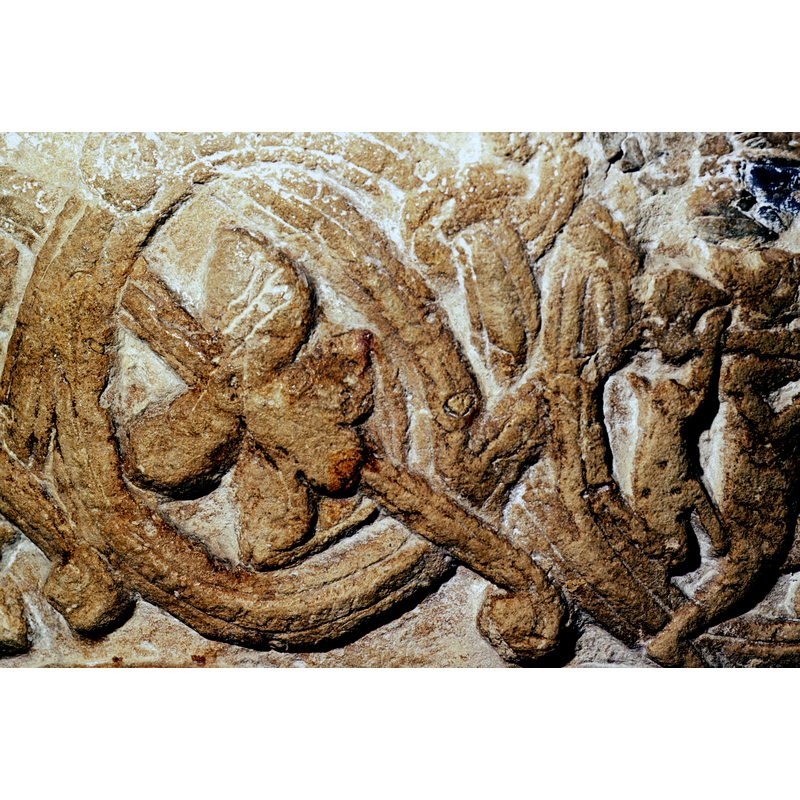
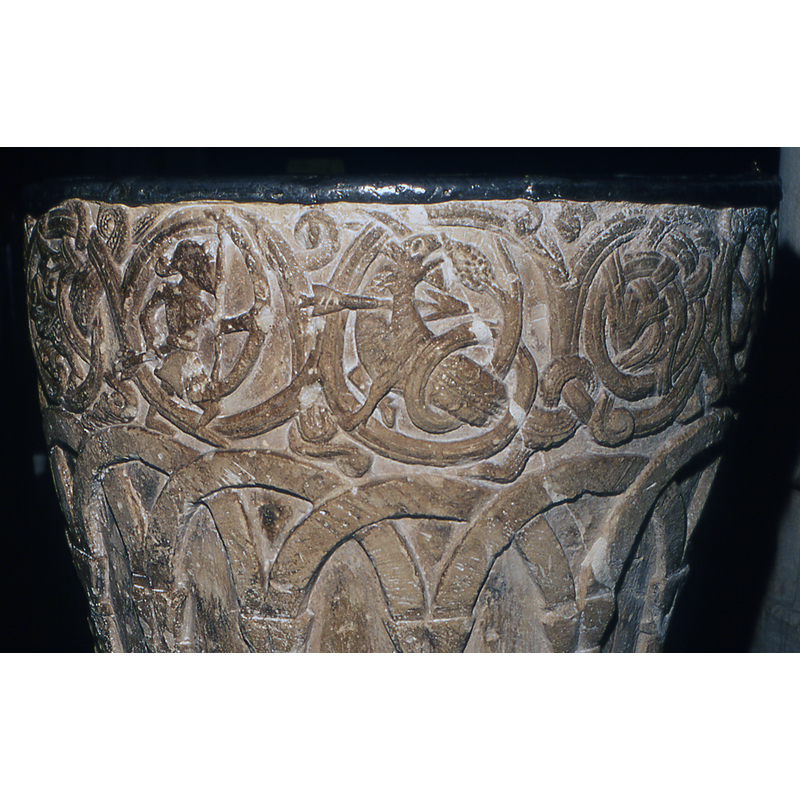
![a hunter returning from a hunt with an axe on his soulder; the kill hangs from the ax; an animal (?) walks in fron of him [NB: the depiction of the figures does not appear to represent images of humans and known animals, but rather of fabulous creatures or monsters] -](/static-50478a99ec6f36a15d6234548c59f63da52304e5/compressed/ALP9800404_compressed.png)
